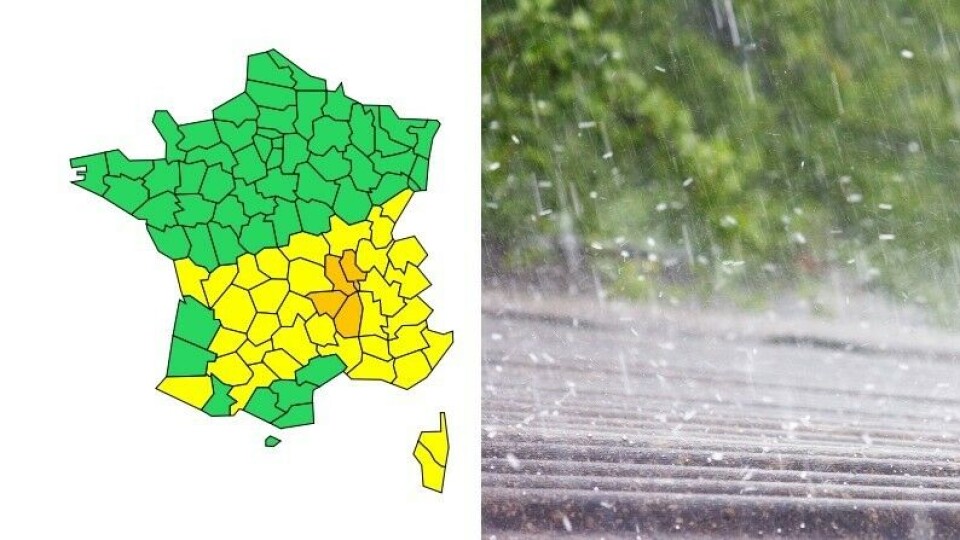-
Britons are the largest foreign community of second-home owners in Nouvelle Aquitaine
See which other departments in the region are popular with British nationals
-
Travellers risk extra costs under new Eurotunnel ticket rule
Some fare options are less flexible and less forgiving of lateness
-
May will be difficult month for train travel in France, warns minister
Two major train unions are threatening to strike and are ‘not willing to negotiate’, he says
Four departments in central-eastern France on orange storm alert
Rhône, Loire, Haute-Loire and Ardèche should expect strong winds and hailstones of ‘more than 2cm in diameter’

Four departments in central-eastern France have been placed under an orange weather alert for storms this morning (July 4).
The departments are Rhône, Loire, Haute-Loire and Ardèche.
🔶 4 dpts en #vigilanceOrange
— VigiMétéoFrance (@VigiMeteoFrance) July 4, 2022
Restez informés sur https://t.co/rJ24zzmmy4 pic.twitter.com/SX0m2Wv4oB
National weather forecasting service Météo France has stated that this afternoon, storms will move over from the Massif central, bringing “sometimes violent hail showers,” with stones of “more than 2cm in diameter”.
Wind gusts of 80-90km/h are expected and 20-30mm of rain could fall over a short period.
The storms will gradually move over towards the Alps, but growing less intense as they go.
Some 33 other departments covering the southern half of France are also under a yellow weather warning for storms today.
Gard, Bouches-du-Rhône, Vaucluse, Alpes-de-Haute-Provence and Var are also under a yellow alert for high temperatures, but residents do not need to take any precautionary measures at this stage.
Advice for residents under orange warning
People living in departments covered by the orange storm alert should stay away from bodies of water and shelter inside a sturdy building if possible.
Possessions that could be blown away should be secured.
Residents should avoid going out if they can, and make sure to keep up to date with the situation.
Related articles
MAP: where are water restrictions now in place in France?
Dordogne storm victims call for official natural disaster recognition
France’s official average temperature rises by 0.4C after review
























